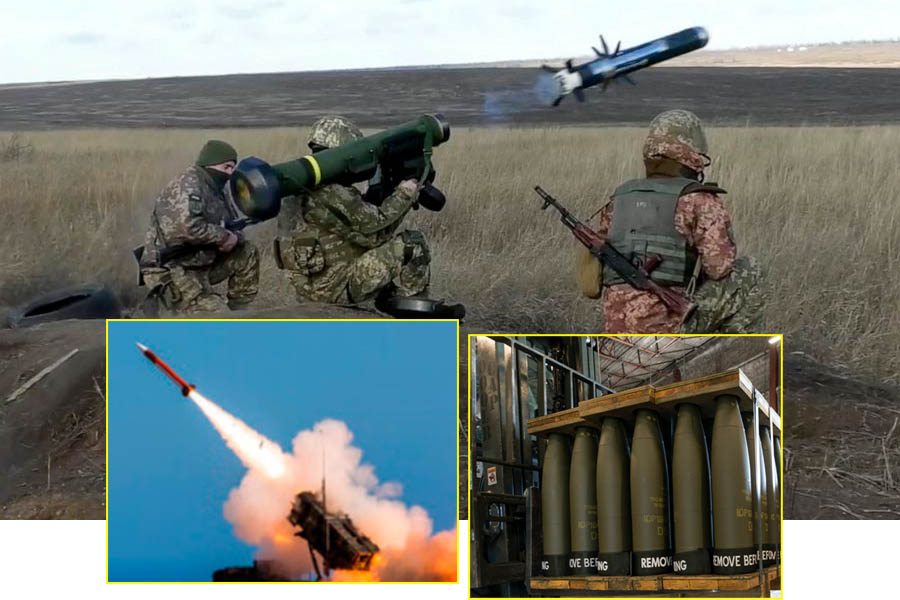
Recent developments from Washington suggest that U.S. President Joe Biden may be nearing a decision to provide Ukraine with the essential longer-range missiles it urgently requires. A report from CNN on September 11, quoting an official familiar with the discussions, revealed that the final verdict on supplying Ukraine with Army Tactical Missile Systems (ATACMS) had yet to be made. However, there is growing optimism within the administration that such a decision is increasingly likely.
Ukraine's Urgent Need for Extended Reach
Ukraine's ongoing spring and summer counteroffensive has highlighted the pressing need for enhanced weaponry. Specifically, Ukraine seeks missiles capable of striking deep within Russian territory, enabling Kiev to target Russian field headquarters and supply depots effectively. This request for extended-range missile systems is part of a broader list of desired weapons and equipment, as outlined by Oleksiy Danilov, the secretary of Ukraine's National Security and Defense Council.
The comprehensive list includes ammunition, artillery shells of various calibers, cruise missiles, multifunctional aircraft, helicopters, drones, and sophisticated robotic de-mining equipment. Ukraine is also urging its allies to establish maintenance and repair facilities for Western weapons in bordering countries.
The Significance of ATACMS
While the U.S. supplied guided multiple-launch rocket systems and missiles with a 70-kilometer range during the summer of 2022 for attacks on Russian logistical facilities, ATACMS presents a more formidable option. These missiles, launched from High Mobility Artillery Rocket Systems (HIMARS), boast a range of up to 300 kilometers. Such capabilities could significantly challenge Russia's defense lines in the south, a crucial factor as Ukrainian forces push toward the Sea of Azov, 100 kilometers away.
Initial U.S. reluctance to supply longer-range missile systems stemmed from concerns about their potential use to strike deep into Russian territory, potentially leading to escalation. However, Ukraine's demonstrated ability to use homegrown drones for attacks within Russia suggests an awareness of these concerns. Moreover, Ukraine already possesses some longer-range missile systems, including UK-supplied Storm Shadow cruise missiles used in a recent attack on the Russian Black Sea Fleet facilities at Sevastopol, which resulted in severe damage to two vessels.
U.S. Shift in Approach
President Biden's decision to reverse the U.S. stance on allowing NATO allies to supply Ukraine with F-16 fighter jets underscores a growing recognition within the U.S. and NATO of the necessity to bolster Ukraine's arsenal for a more effective 2023 counteroffensive. Germany is also contemplating supplying Ukraine with Taurus cruise missiles, capable of autonomously approaching their targets and boasting a range of up to 500 kilometers. However, concerns over range and escalation are influencing deliberations, with possible modifications to limit the missile's reach under consideration.
Ukraine's Ongoing Evolution
Since Russia's invasion in February 2022, Ukraine's need for increasingly sophisticated weapons systems has continued to evolve. Quoting Article 51 of the UN Charter in an August article, Oleksiy Danilov emphasized that aiding Ukraine in its defense is squarely in the self-interest of UN members. Danilov outlined how Ukraine's requirements have shifted from its initial desperate defense against the superior artillery of Russia's invasion force to its present needs as Ukrainian forces strive to break through Russian defensive lines.
The deployment of ATACMS, Taurus cruise missiles, and other extended-range missiles would enable Ukraine to strike targets throughout the entirety of the Ukrainian territory under Russian control, including Crimea, as demonstrated by the successful attack on Sevastopol.
Ukraine's Ongoing Appeal to Allies
President Volodymyr Zelensky continues to exert pressure on President Biden and other NATO leaders, emphasizing the urgency of the situation. While Ukraine remains grateful for Western assistance, delays due to political considerations are exacting a high cost in terms of soldiers' lives and the momentum of the counteroffensive. Ukraine's preparations for the counteroffensive have been further complicated by Russia's extensive use of minefields across its defensive lines, making it one of the most mine-contaminated countries globally.
Challenges Posed by Inclement Weather
As Ukraine's counteroffensive continues into the fall and winter, inclement weather presents additional challenges. Drenching rain and icy cold can hinder military operations, dissolving roads, and impeding essential activities. The risk is that a breakthrough achieved during this period might be challenging to exploit due to muddy or snowy terrain.
Nonetheless, Ukrainian forces are determined to continue their efforts, focusing on creating fissures in Russian defenses that they can widen and utilize for armored equipment advancement. The window for favorable fighting conditions is limited, with an estimated 30 to 45 days of fighting weather left before conditions turn against Ukraine. Consequently, the transition from attacking to holding ground and protecting civilian infrastructure during winter is anticipated toward the end of October.
In the ongoing conflict, drones have played a pivotal role, assisting Ukrainian ground forces by providing real-time intelligence. Drones are an integral part of front-line operations, offering constant reconnaissance and surveillance, even for low-level soldiers. Russian troops have also rapidly integrated drones into their battlefield operations, contributing to the slower pace of Ukraine's counteroffensive. Despite the challenges posed by evolving tactics and weather conditions, Ukraine's determination to advance remains unwavering. The focus now is on making progress before adverse weather conditions further complicate the situation, with both sides experienced in adapting to changing circumstances and maintaining their operational effectiveness.